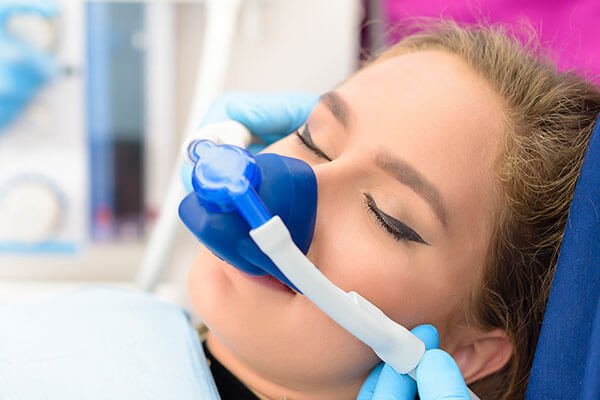Do you fear the very thought of visiting the dentist? Or does the idea of getting your teeth examined make you feel uncomfortable? There are many people out there who would rather endure a toothache than set foot in a dental clinic.
However, you don’t have to worry, as there is an effective way to overcome your dental phobia. Sedation dentistry can be your ultimate solution. It can undoubtedly help alleviate your anxiety and make your visit to the dentist a breeze. From routine cleanings to complex procedures, sedation can be used to help you relax and feel comfortable during your treatment.
So, if you’re one of those who has been avoiding the dentist due to fear, don’t let it hold you back anymore. With sedation dentistry, you can take control of your oral health and maintain a beautiful smile without any kind of stress or discomfort.
WHAT IS SEDATION DENTISTRY?
Sedation dentistry is a type of conscious sedation that can help you feel relaxed. Nevertheless, it won’t make you totally fall asleep. But it can make you less aware of your surroundings, including any dental work being done in your mouth. This form of sedation allows patients to respond to verbal commands and move around if needed.
How To Prepare For IV Sedation?
When undergoing sedation, make sure to follow the instructions provided by your professional. In addition to that, it is also important to take extra precautions. Here are some things to expect before, during, and after the procedure.
BEFORE:
Before the dental appointment, your dentist will guide you and might give a few instructions. These usually involve wearing comfortable clothes, not eating or drinking anything for 6-8 hours prior to sedation, and stopping certain medications. It’s crucial to disclose your entire medical history and notify your dentist of any changes beforehand. Also, make sure to arrange for a driver to take you to and from the appointment.
IN-PROCEDURE:
Once you’ve settled into the dental chair, a professional dentist will usually insert an IV sedation into your hand or arm. If you need any extra medications, like pain relievers, anti-inflammatories, or steroids, they’ll typically be given through your IV, too. The dentist will monitor your pulse, breathing, and blood pressure closely during the procedure. Patients usually feel relaxed during the effect of this sedation and do not notice any sights, smells, or sounds.
AFTER:
After the procedure has been concluded, it is quite normal to experience drowsiness for a few hours. Your driver will pick up any post-procedure instructions from the dentist and take you home safely. It is crucial to clear your schedule for the next 24 hours and avoid strenuous activities, unapproved medications, and heavy machinery. Although complications from sedation are rare, if you experience any issues, please contact a dentist immediately.
TYPES OF SEDATION ARE USED IN DENTISTRY:
Dentists may use different types of sedation to help patients relax and feel comfortable during dental procedures. These sedation methods include local anesthesia, nitrous oxide, oral sedation, and IV sedation.
1. INHALED MINIMAL SEDATION:
This type of sedation is usually inhaled through a mask over patients’ noses, and they usually breathe in a mixture of nitrous oxide and oxygen. It is also known as “laughing gas.” This gas will help you relax, and your dentist will control the amount of sedation you receive. It is important to note that the effects of the gas wear off quickly. Moreover, this is the only sedation method that allows patients to drive themselves home after the procedure.
2. ORAL SEDATION:
When undergoing oral sedation, the strength of the medication can vary depending on the dosage. Minimal sedation involves taking a pill. You will typically take the pill an hour before the procedure, and it will make you feel drowsy but still awake.
3. MODERATE SEDATION:
For moderate sedation, a higher dose may be given, which is the most common type of sedation used in dentistry. While some people may become sleepy enough to fall asleep during the procedure, they can usually be awakened with a gentle shake.
Dentists administer this sedative drug intravenously for quicker absorption. However, during the dental procedure, the level of sedation can be adjusted.
4. GENERAL ANESTHESIA:
During general anesthesia, you will be given medication that will cause you to enter either a near or completely unconscious state. It can be challenging to regain consciousness while under general anesthesia, and you will likely need to wait until the effects of the medication wear off or are reversed with additional medication.
WHAT IS IV SEDATION DENTISTRY?
Unlike other sedation methods that involve inhaling or swallowing medication, IV sedation is administered intravenously, directly into the patient’s vein. This will help them feel relaxed and calm. This IV sedation dentistry is also called ‘twilight’ or ‘ sleep’ dentistry.
Even though the patient may respond to the dentist’s questions, they may not remember the treatment procedure once the sedative wears off. However, it is quite an effective sedative method to ease up painful dental procedures.






